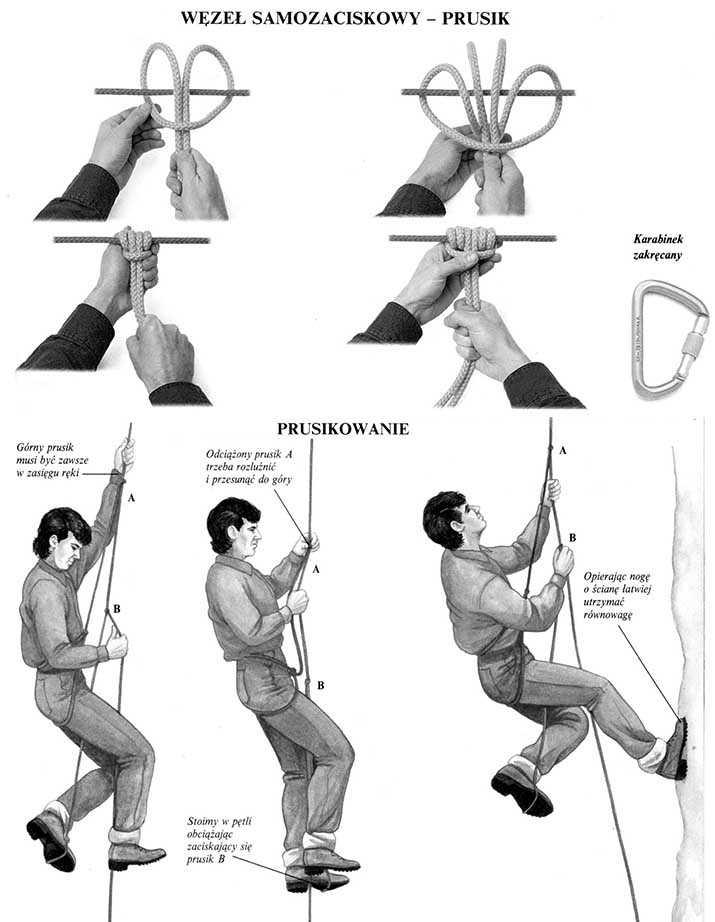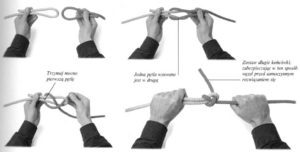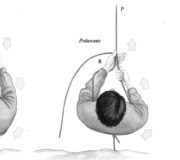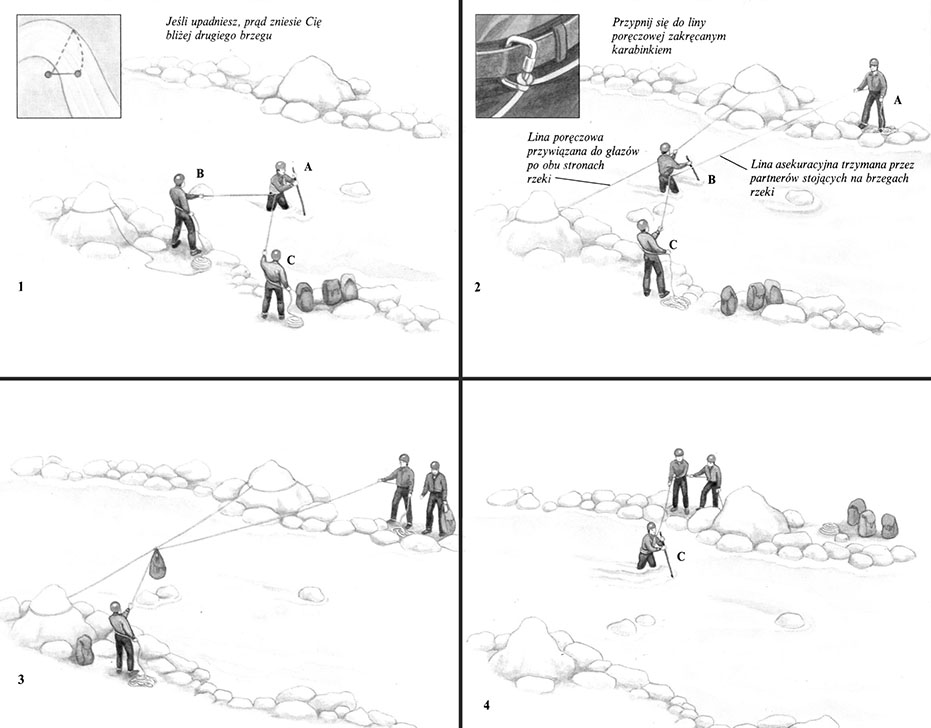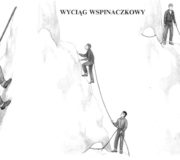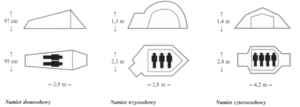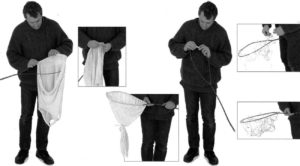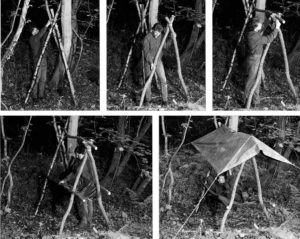WĘZEŁ SAMOZACISKOWY – PRUSIK
Węzły samozaciskowe zawiązuje się na linie. Pod obciążeniem zaciskają się bardzo mocno, a rozluźnione dają się po niej przesuwać. Prusik jest jednym z typów takiego węzła. Można się nim przywiązać do liny i asekurować przy zjeździe lub użyć do wspinania w górę.
1 Z linki robimy pętlę, którą owijamy wokół liny. Końcówki linki przekładamy przez powstałe oczko
2 Rozluźniamy pętelkę węzła wokół czerwonej liny i ponownie przekładamy przez oczko końcówki żółtej linki, jak za pierwszym razem.
3 Ciągnąc za końcówki linki zaciskamy węzeł na linie. Wszystkie zwoje powinny układać się równo, nie mogą zachodzić jeden na drugi.
4 Aby zwiększyć siłę tarcia o linę można zwielokrotnić liczbę zwojów przekładając końcówki i powtarzając czynności pokazane w punktach 2 i 3.
KARABINEK
Wykonany jest ze stali, ale częściej z duraluminium, ma kształt ucha z zatrzaskiem. Pozwala szybko łączyć ze sobą liny, pętle lub zawieszać sprzęt. Za ich pomocą zakłada się przelotowe punkty asekuracyjne. Karabinek zakręcany ma na ruchomym ramieniu karbowaną nakrętkę, dodatkowe zabezpieczenie przed samoczynnym otwarciem. Takie karabinki dłużej się zamyka, ale są one bezpieczniejsze; używa się je do asekuracji przy zjeździe na linie i w innych niebezpiecznych sytuacjach.
Karabinek zakręcany – Używaj go wówczas, gdy musisz połączyć się pewnie z liną na przykład przy asekuracji czy zjeździe po linie.
Wchodzenie w górę po linie, nazywane od węzła samozaciskowego prusikowaniem, pozwala wyjść z ciężkich opresji w ścianie. Aby móc prusikować, trzeba mieć dwie krótkie linki bądź taśmy, uprząż i pas oraz linę asekuracyjną. Jeśli nie mamy specjalnej uprzęży i pasa, możemy je zrobić z pętli zakładanych na uda i wiązanych w talii za pomocą podwójnego węzła zderzakowego, zwanego również rybackim.
1 Linką odchodzącą od uprzęży przywiąż się do zwisającej z góry liny asekuracyjnej za pomocą prusika A. Poniżej zawiąż na linie prusik z drugiej linki. Na jej końcu zrób pętelkę, tzw. strzemię i wsuń w nią stopę.
2 Technika posuwania się w górę po linie polega na tym, by prostując nogę w strzemieniu wypychać się ku górze. Prostując się obciążamy prusik B, który zaciska się na linie, dlatego możemy stanąć w pętli i rozluźnić prusik A. Odciążony prusik A przesuwamy do góry, najwyżej jak można.
3 Po podciągnięciu prusika A powoli obniżamy się wracając do poprzedniej pozycji.
Siedząc w uprzęży zwisa się na zielonej lince, wówczas prusik A jest obciążony, dlatego zaciska się na linie. Naciągając linę asekuracyjną i podkurczając kolano można przesunąć prusik B. Strzemię powędruje wyżej, a po wyprostowaniu nogi znowu przesuniemy się do góry.
